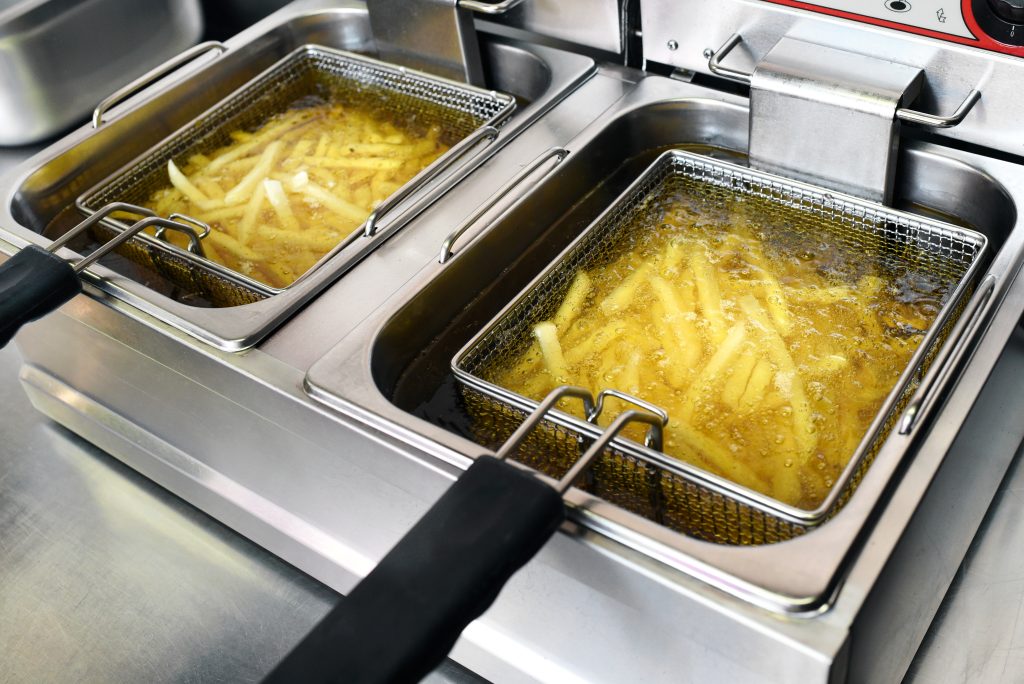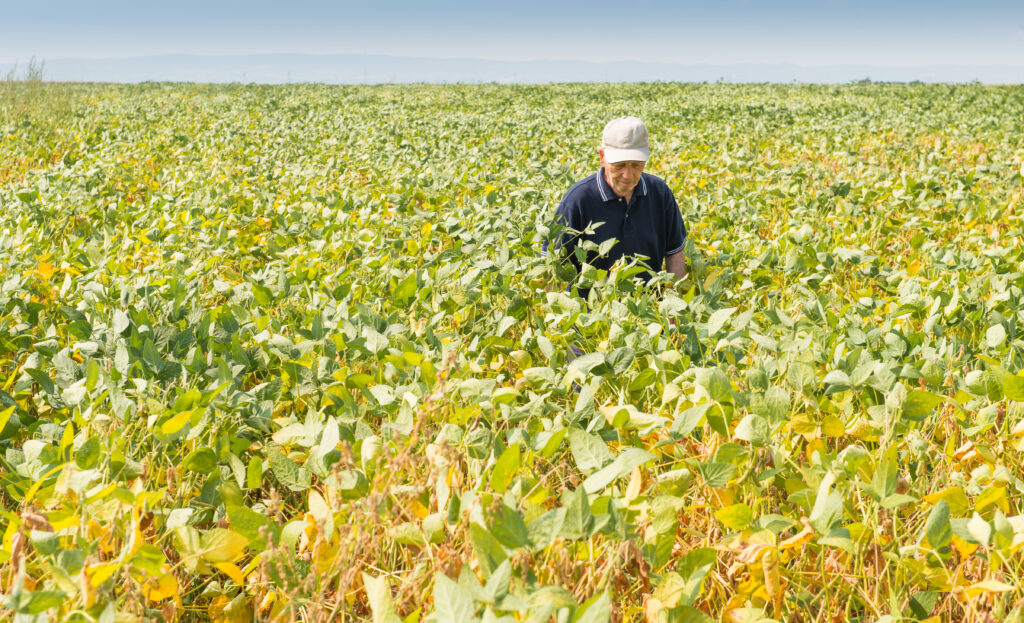Reposted from: https://www.levernews.com/the-rise-of-big-potato/
One afternoon in April 2022, Josh Saltzman, the owner of a sports bar in Washington, D.C., opened his inbox to find what looked like a french fry price-fixing conspiracy.
Saltzman had received a notice from his bar’s food distributor that effective April 4, the four major suppliers of frozen potato products, which sell products like french fries and Tater Tots to bars and restaurants around the country, were all hiking their prices in lockstep, each by $0.12 per pound.
For Saltzman, it was hard to believe this was a coincidence. “It was just the most obvious example of collusion I’ve seen in a long time,” he said. “All of them were raising their prices by virtually the exact same amount within a week of each other.”
Frustrated, Saltzman took to the internet. “I was just like, ‘Oh, I’m going to fire off a tweet about Big Potato,’” he said. “Then it somehow took on a life of its own.”
Big Potato was more real than Saltzman had anticipated. That April, Saltzman’s offhand tweet — “Totally not collusion or anything, right?” — went viral. And last month, it was cited in a new spate of antitrust lawsuits brought against the four biggest companies in the frozen potato market, claiming the companies were in fact colluding when they all hiked their prices at the same time in 2022.
The four companies now stand accused of operating as a “cartel” and conspiring to hike prices, jacking up the cost of french fries and Tater Tots around the country. But they’re hardly alone. The case against Big Potato is a window into how consolidation has crept into every corner of the food industry — and how these firms are finding new, sophisticated methods to keep prices high.
After decades of consolidation, just four firms now control at least 97 percent of the $68 billion frozen potato market, the antitrust cases reveal. These four companies participate in the same trade associations and use a third-party data analytics platform — PotatoTrac — to share confidential business information. The lawsuits allege the firms’ collusion has driven french fries and hash browns to record-high prices.
Consumers have felt the impacts of these price hikes. The cost of fries at McDonald’s has increased by 138 percent since 2014, and hash brown prices have more than doubled in recent years at fast food joints including Jack in the Box and Hardee’s. At local dives and mom-and-pop joints — like Saltzman’s bar, Ivy and Coney — the cost of fries is going up, too.
Between July 2022 and July 2024, the price of frozen potato products increased by 47 percent across the board, according to court documents. This rise was initially tied to a jump in operating costs among the companies that peaked in 2022 — but even as these expenses have declined over the last two years, product prices have remained high.
In all corners of the food industry, similar developments have occurred: Industries consolidate, and prices jump. Even niche markets like almond milk and microwave popcorn are increasingly controlled by just a few firms, driving higher prices for consumers and uncertainty for farmers and suppliers — and helping to fund lucrative stock buyback programs and payouts for executives and top shareholders.
“All of these industries are trending toward duopolies — the model of Coke and Pepsi,” said Philip Howard, a professor at Michigan State University who studies concentration in food systems. While concentration is “not always as bad as 97 percent held by four firms like in the potato industry,” he said, “a lot of industries are getting closer and closer to that.”
A spokesperson for Lamb Weston Holdings, the biggest player in frozen potatoes and one of the main defendants in the antitrust cases, wrote in response to questions from The Lever that “we believe the claims are without merit and intend to vigorously defend our position.”
The other three potato firms named as defendants in the lawsuits did not respond to requests for comment.
The Potato Cartel
The antitrust battle against the frozen potato market began in November. Since last month, more than a dozen coordinated private class action lawsuits have been filed on behalf of restaurants, grocery stores, and food distributors around the country, all of which claim that price-fixing by the four french fry behemoths has hurt their bottom lines.
“The potato cartel moves prices skyward in lockstep — harming all purchasers of potatoes in the process,” attorneys wrote in a lawsuit filed in November.
Years of consolidation in the french fry market preceded these collusion allegations.
According to the suits, around 40 percent of all potatoes grown in the United States are sold to frozen potato companies — 17 billion pounds annually. These firms buy potatoes from growers, prepare and freeze them, package them, and send them off to restaurants, grocery stores, bars, and distributors as frozen fries or tater-tots.
Over the last 20 years, more than a dozen companies with significant shares of the frozen potato market have been whittled down to just four: Lamb Weston, the J.R. Simplot Company, Canada-based company McCain Foods, and Cavendish Farms, all of which are defendants in the antitrust lawsuits. Lamb Weston and McCain alone control 70 percent of the market; J.R. Simplot controls another 20 percent, and Cavendish Farms accounts for 7 percent, according to court documents.
Back in the early ’90s, industry insiders described competition in the frozen potato industry as “fierce.” According to one copyright lawsuit from 1993, that competition inspired the creation of the waffle fry, an innovation that both Lamb Weston and McCain Foods fought to take credit for and use to dominate the market.
Over the years that followed, however, Lamb Weston — which was for a time owned by major food conglomerate Conagra — McCain Foods, and J.R. Simplot expanded their respective market shares, acquiring or eliminating their smaller rivals and expanding their control over the industry.
Potential new challengers faced major hurdles when entering the market. The dominance of fast food chains had made frozen potatoes a bulk commodity. Lamb Weston, McCain, and the other potato firms weren’t making their money by selling to mom-and-pop businesses — they were increasingly competing for major contracts with McDonald’s and Burger King.
Lax antitrust policy also helped the industry consolidate. Although the 1990s and early 2000s were hardly known for robust antimonopoly enforcement, Howard, the Michigan State University professor, said he was still surprised that regulators allowed the french fry giants to obtain a staggering 97 percent share of the market.
“It’s interesting that even in a very permissive environment of mergers and acquisitions, this industry was allowed to get to the level that it has,” Howard said.
Sarah Carden, research and policy development director at Farm Action, a watchdog group that advocates against consolidation in the food system, agreed that the frozen potato industry was “a more extreme example” of market concentration — but it’s hardly alone.
Look closely at any aisle of the grocery store, and you’ll likely find an extremely consolidated market, she pointed out. Of more than 50 grocery items surveyed in a 2021 report by advocacy group Food and Water Watch and The Guardian, nearly 80 percent came from industries in which four firms or fewer firms controlled at least 40 percent of the market share.
Though few market concentrations were quite so extreme as the frozen potato industry, many come close, the report found. Four firms controlled nearly 80 percent of the almond milk market, for instance. Three companies controlled 83 percent of the canned tuna market, and four companies controlled more than 86 percent of the microwave popcorn market.
“There are these niche markets that we don’t really think about when we think about concentration, like frozen potatoes,” said Amanda Starbuck, a senior researcher at Food and Water Watch. Such consolidation goes “hand in hand” with concentration in bigger food markets like meat processing, as well as consolidation of grocery store chains, she said.
In the same way, french fry price hikes may be enabled by the decline in independent french fry purveyors. When asked by an industry analyst in 2021 whether the big frozen potato companies “could actually pass through this 4 percent to 5 percent [price increase],” a former Lamb Weston executive explained in a call with an investor that such a price increase was made possible by the companies’ deals with big chains.
“It seems like a lot, but understand what’s happened on the food service side is that the small mom-and-pops have unfortunately died,” the executive said, according to an online transcript of the conversation, which was cited in court documents. “And then the people that are taking over are the Chili’s and the Texas Roadhouses and Cheesecake Factory.”
In turn, the arrangement has meant big profits for the frozen potato companies. “This is Nirvana for the likes of Lamb Weston, Simplot, and McCain,” the executive said. “They have never ever seen margins this high in the history of the potato industry.”
For Saltzman and the clientele at his sports bar, however, the price hikes are a mounting strain. When he opened Ivy and Coney’s doors a decade ago, an order of fries was around $3, he said. That cost has now doubled — and his margins have only decreased. “I’m not making any more money off it,” he said.
Ivy and Coney, a dive known for its hot dogs, prides itself on its budget offerings. “Cheap food, cheap booze, even cheaper company,” is the establishment’s slogan. Customers are quick to feel sticker shock when the price of onion rings or french fries jumps, Saltzman explained: “There’s only so much you can up it before, you know, it seems crazy.”
Yet the business couldn’t shop around for cheaper fry options, even if they existed. The food suppliers that Saltzman works with only partner with select frozen potato companies. To go outside of a supplier — or to make fresh-cut fries — would only raise costs further. “Even if I could get a cheaper price, it would end up costing me more time and money,” he explained.
On the other end of the supply chain are the farmers who sell the raw potatoes to the frozen potato behemoths. “It’s a problem for potato growers, because they have so few places to sell to,” Howard said. With only four potential buyers, growers have less leverage — meaning that the profits from higher french fry prices aren’t passed down to the farmers actually growing the potatoes.
Interlocking Tendrils
Yet even with declining operating costs for the companies and consumers frustrated with ever-worsening french fry inflation, the four frozen potato giants have allowed their prices to continue to soar. None have defected and lowered prices in an attempt to fight for more market share. According to the lawsuits, that’s because they have conspired to keep the prices where they are.
In the popular imagination, price-fixing agreements might be struck at a secret meeting of rival executives — the deal made in the classic “smoke-filled room.” But the case against Big Potato argues that the frozen potato companies have accomplished such a tacit agreement through other means: a third-party tech platform.
From meatpacking to real estate, antitrust enforcers have begun to take a closer look at information-sharing platforms, software used within industries to share business information between rival companies. Regulators argue that such tech platforms allow companies to tacitly fix prices by swapping detailed and often confidential information on their operating costs and pricing.
Under the Biden administration, these antitrust cases have become “very, very hot the last year or two,” said Bruce Sokler, an antitrust attorney with corporate law firm Mintz, a trend he expected to continue even if the incoming Trump administration pursues a slightly less aggressive stance on antitrust enforcement.
“My strong suspicion is that they’re going to pursue these cases,” he said.
The Department of Justice’s antitrust case against meat processors focuses on an industry data analytics platform called Agri Stats, which it argues in some cases “even encouraged meat processors to raise prices and reduce supply.” A private antitrust case against the country’s biggest sugar refineries argues that United Sugar and Domino fixed prices in part by giving private information to a data-sharing company called Commodity.
These cases aren’t limited to the food industry. Similar platforms in housing and hotels have caught regulators’ attention, most notably RealPage, software that helps landlords set rent prices. Such anticompetitive algorithms may be costing renters billions of dollars a year, according to a recent White House study.
“It’s unnecessary to actually have everybody get together and agree on prices, because that’s a felony, and you can go to prison, and they know that,” said Peter Carstensen, a professor emeritus at the University of Wisconsin Law School and a senior fellow at the American Antitrust Institute. “So they’re not going to do that if they’ve got another means of accomplishing the same end.”
For the frozen potato companies, the smoke-filled room is called PotatoTrac, an analytics service sold by a third-party company called Circana. The four major frozen potato companies all agree to feed data into PotatoTrac, which the service then distributes to the market, giving executives an in-depth look at supply, labor costs, and pricing.
“Using this aggregated pricing data, the Defendants have been able to coordinate prices… to artificially inflate the price of [frozen potatoes] by ensuring that no price competition takes place,” one lawsuit argues.
Particularly in highly consolidated markets like frozen potatoes, experts say such data analytics — even when aggregated and anonymized — can easily be deciphered by rivals because there are so few companies in the market.
“It’s really not all that different from a handful of executives getting into a room,” said Carden with Farm Action. “These are supposed to be competitors, but they’re sharing all of this proprietary data.”
In some cases, the frozen potato sellers are all in the same room. The lawsuits highlight the companies’ membership in the potato lobby, which is composed of various trade groups: the Potato Association of America, the National Potato Council, and the Potato Sustainability Alliance. Some of these groups throw annual meetings, which the executives attend, giving them “opportunities to meet and conspire about their prices,” the lawsuits allege.
With no end in sight to the skyrocketing prices — and profit margins — of the frozen potato cartel, these antitrust cases are something of a last resort. But they are not always easy to win.
“I think everyone’s pretty much beat down when it comes to trying to fight these market manipulation lawsuits, because they generally don’t go anywhere,” said Saltzman at Ivy and Coney. Whether Big Potato will be any different remains to be seen.




